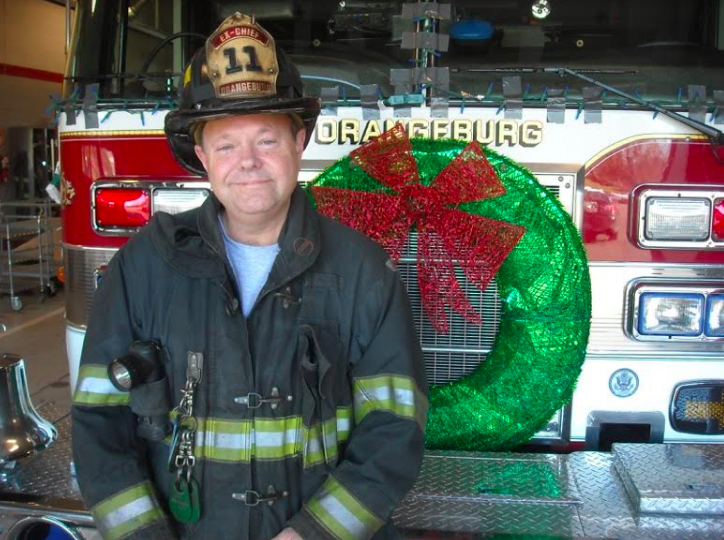
By Barry Warner
Firefighters are exposed to the most hazardous of situations and greatest risk procedures during emergency scene operations. To ensure that firefighters do not become victims, the Chief Commander must engage in the operations, recognize the hazards and address them in a proactive manner.
“I served as a firefighter for 10 years, an engineer for one-half year, a lieutenant for nine years, and assistant chief and chief from 1994 to 2003. On the fire incident scene, the chief arranges for mutual aid from other fire departments, coordinates with EMS and the police department, plus sets up traffic points and triage. The assistant chief serves as the operations officer and takes command of the firefighters and informs the chief who is going inside the building. Right now, I am a regular firefighter and go out on calls to climb ladders, ventilate roofs, do search and rescue plus take on a lot of responsibility,” ex-chief John Alf told the Rockland County Times.
“I have been an instructor at the Fire Training Center for 10 years,” he continued. “I have put together a seven-day truck class and teach students at the Youth Fire Academy. A lot of the students have gone on to volunteer at their local firehouses. I run the ‘flame simulator game’ for the firefighters, which is great for communication of the fire ground. I take pictures of certain buildings and then produce computer generated smoke and fire coming out of the building. In this game, firefighters must make decisions on how to put out the fire.”
“The ‘Fire Attack Panel’ looks like fire with LED lights and it ‘crackles’ like a real fire. It’s placed in the ‘burn building’ with a lot of smoke and heat. The firefighters can put a hose line on it and learn how long it takes to put out the fire. The ‘ADMS Simulator’ provides emergency and disaster management training as it teaches students how to command a large incident. I can make buildings collapse and objects explode on the simulator. I’m also in charge of Fit-Testing of the Self Contained Breathing Apparatus (SCBA) for the area fire departments and local corporations.”
Goals for a Youth Fire Academy are to recruit and educate a diverse group of local high school youth about the volunteer fire service in a safe, supportive team environment. The drills consist of various training scenarios ranging from first-aid to structure fires. When a participant joins, the individual is provided with firefighting gear, a work uniform, a dress uniform and is given a ‘fit test’ in order to use a SCBA. Some of the topics covered include Cardiopulmonary Resuscitation (CPR), blood borne pathogens, the Automated External Defibrillator (AED), mask-confidence, using a ladder and forcible entry. Turnout gear, which can weigh as much as 50 pounds, includes a fireproof insulated coat, a helmet, gloves, boots and pants.
Live fire training is a critical part of the instruction and certification process for firefighters. It teaches them how to safely and effectively fight fires in a controlled setting under supervision. The two parts to firefighter training are classroom education and hands-on or field training. Working a live fire is the field training aspect of a firefighter’s learning experience. Live fire training drills teach trainees to think clearly and act calmly under the stress of an emergency situation when lives are at stake and every second counts. They must effectively use their training to solve the unique problems of a fire emergency, while maintaining their own safety as well as their fellow firefighters’ and any other people involved on the fire scene. This includes operating heavy equipment and tools, which can cause serious injury if used improperly. In order to conduct a live fire training drill, instructors purposely ignite structures which are called ‘burn buildings.’ The structures used in these drills are either built specifically to be burned or are acquired by the fire department for that purpose. Sometimes ‘burn buildings’ are those that have been condemned and would be torn down if they were not used in these drills. After the instructor briefs them about the live fire drill, the students enter the building carrying a fire hose. One crewmember operates the hose nozzle, while the others support the hose. Trainees outside the building feed the hose forward as the firefighters move further into the building.
A respirator cannot protect if it doesn’t fit the individual’s face. Certain respirators, known as tight-fitting respirators must form a tight seal with the face or neck to work properly. If the respirator or SCBA doesn’t fit the face properly, contaminated air can leak into the respirator face piece and the individual could breathe in hazardous substances. A ‘fit test’ checks the seal between the respirator’s face piece and the individual’s face. A qualitative ‘fit test’ uses the senses of taste or smell or the reaction to an irritant in order to detect leakage into the respirator. For instance, the leakage of irritant smoke can cause coughing and the leakage of saccharin leaves a sweet taste in the mouth.
“My father was a volunteer firefighter and I was intrigued by the sirens when I was a kid,” Alf concluded. “I have lived in Orangeburg since I was four years old. I was excited about becoming a firefighter and I joined in 1975. I enjoy the camaraderie of the other firefighters. In the last ten years, I have been the number one responder—it’s part of me and I enjoy the challenge at a fire!”
For additional information about volunteering, visit https://orangeburgfd.org or call 845-359-5587.

You must be logged in to post a comment Login